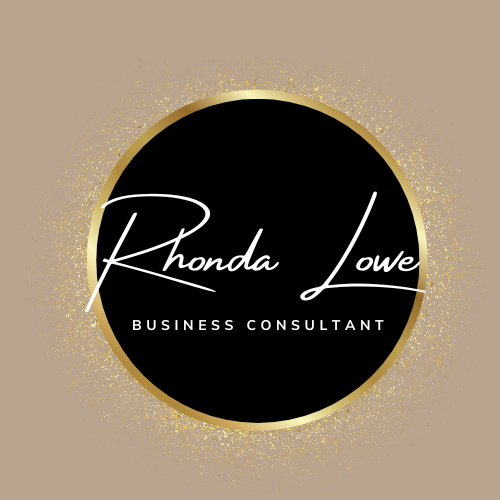
The two major causes of business failure are lack of funds and lack of planning. Both things are important to know from the start. This is true for the entrepreneur looking to start a business as well as the one who has been in business for a while and not sure what their next move is. This article will tell you how and why it’s important to create a business plan.
Here we are focusing on “planning your business.”
There will be people reading this that are just starting a business and those already in business.
If you’re just starting a business, it’s easy to get lost in the excitement of starting a new business. Entrepreneurs are idea people- lots of ideas! So, if you have an idea- why do you need a plan?
If you’re already in business, you have gotten this far without a plan so why do you need a plan – right?
If you’re taking the time to read this, then you have already seen the need to one degree or another or are at least open to the idea.
The question is often: Should I spend the time creating a plan
or just start the business and see what happens?
I hope to show you the value of creating a business plan, whether you need funding or not, and how it can change the way you do business.
So, it’s not really a question of “whether or not” to write a plan, but rather the kind of planning you do.
Let’s start at the beginning.
What is a Business Plan?
You might have an idea of what a business plan is from things you have seen or heard in the past. You might be envisioning it as this big 50-page document that is going to take forever to finish and will require you to learn financial reports that scares you to death!
Let me help you lose some of those fears. First, it is a living document that will change over time. In essence, it should always be a work in progress!
It will look different if you are starting your business than if you are growing your business.
I like to think of it as a roadmap to get you from where you are to where you want to go.
It will help you see the “big” picture by looking at all aspects of a business
Who Needs a Business Plan?
The good news is that it serves both start-ups and those in business. Here are some examples of times when a business plan can benefit you most.
When first planning your business
You could probably start with a shorter, lean plan while learning about your products and services. Things will change as your business stabilizes.
You will want to review the plan often to see patterns and trends.
When you’re looking for funding
This is generally required in most lending packets. It will help you articulate your vision to the lender or investor. It goes without saying, but remember, it should present a solid financial picture to show you are credit worthy.
When you are expanding your business
This could be when you are adding new revenue streams or perhaps adding new locations. It can also be helpful when you are expanding your team. At this stage your business plan would be used to support what you are currently doing and show growth potential.
When you are selling your business and need a valuation
This can be helpful in providing important information to the person doing the valuation.
How do you choose a business plan?
Two Types of Business Plans
There are two basic types of business plans. The Lean Plan and the Traditional Plan. You can search online and see all kinds of templates and formats, but they basically boil down to these two types.
Let’s look at the Lean Plan first
Here are the components of the Lean Plan
- Customer Segments– This is your target market. Knowing your target market is critical.
- Opportunity– What is the pain or problem in marketplace that you plan to solve?
- Alternatives– These are the competitors that your target market is currently using.
- Solution– This is your solution- your UNIQUE solution that helps you stand out from the crowd.
- Unique Value Proposition– This is how you describe what sets you apart from your competition.
- Unfair Advantage– This is something you can say about you and your business that your competitors cannot say. This really should be key to your marketing strategy.
- The Key metrics– These are your financial numbers that tell will tell you the health of your company? They will show if you are doing well or not or if a certain segment of your business needs help. These numbers will come from your P&L and Cashflow You might also watch for growth in customers or average ticket your customers are spending with you.
- Marketing Channels– This is how you will market your business. This is why it is important to know your target market and where they hang out.
- Cost Structure– This includes both your fixed and variable costs to do business.
- Revenue Streams– Here you list your sources of revenue coming into your business.
Here is an example of a Lean Plan
It’s a simple one-page document that covers the 9 key components to help you get clarity.
Now let’s look at the Traditional Plan
Traditional Plan
Let’s look at the components of the Traditional Plan
- Executive Summary– While this is listed first, it really should be done last. It is really a recap, providing the highlights of what you will be talking about in the rest of the plan.
- Problem/Solution- In a traditional plan you will go more depth than lean plan. You will describe the problem and solution in greater detail.
- Target Market and Size-These are the demographics of your target market. You want to describe them and share how many of them are there?
- Competition and your advantage- It’s important that you know as much about your competition as you do about your business. What is your advantage over each of them? Look at the top 3 and find out everything you can about them.
- Sales and Marketing Plan –
- Marketing is what you do to bring them to your door; sales is what you do once they are there and how you increase revenue.
- Marketing could include your website, social media, print or networking opportunities. Sales could be added services, VIP programs, bundles- other things to increase your average sale.
- Operations– Location, technology needed, equipment/tools, milestones to move you forward as you grow and metrics to keep you focused on the health of your business.
- Ownership and Structure– This is your management team and advisors. It also includes your legal entity.
- Financials– These documents include Income and Expense Statement, Uses and Source of Funds, Profit and Loss Statement, Balance Sheet and Cash Flow Statement.
Choosing the right business plan boils down to just a couple of things.
- Do you need this for funding or is it just to help you get clarity on your idea?
- How complex is your business now and how could it scale to something bigger.
If you are starting a small home-based business that you don’t intend to grow beyond where you are starting, then a Lean plan could certainly be enough to help you get the clarity you need. You’ll identify the core areas you need to focus on and move on quickly. If things change and your business grows you can always expand to a traditional plan.
The point is this: a business plan can help you minimize the chance of failure simply by having you focus on all the areas needed to provide a greater chance to succeed.
Would you like the help of an experienced business coach through the process?
Contact us today to see how we can help you create a great business plan for your business!
rhondaloweconsulting@gmail.com
Further reading on business plans Write your business plan (sba.gov)
